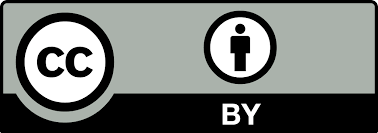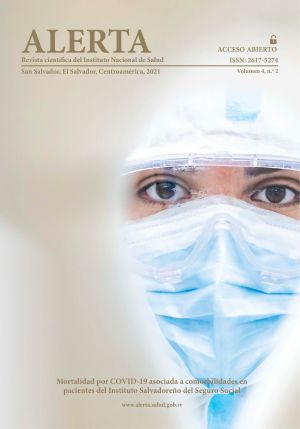Saliva sample for the diagnosis of SARS-CoV-2 by RT-qPCR in an outpatient population.
DOI:
https://doi.org/10.5377/alerta.v4i2.11476Keywords:
Sars-CoV-2, COVID-19, PCR, Coronavirus, saliva, RdRpAbstract
ABSTRACT
Introduction. Currently the detection of SARS-CoV-2 cases in El Salvador has been carried out through RT-PCR by the nasopharyngeal swab sample. Reaserchers had described the saliva as a biological sample useful for detection of SARSCov-2, therefore an opportunity to use it as a feaseble alternative for diagnostic. Objective. To evaluate the self-supplied sample of saliva and nasopharyngeal secretion by non-hospitalized patients as an alternative of lower biological risk and less expensive to nasopharyngeal swab for the diagnosis of SARS-CoV-2.
Methodology. Patient samples that met the inclusion criteria were processed, amplification was carried out by two protocols already standardized by RT-qPCR of the E and RdRp genes, two of the positive samples by New Generation Sequencing (NSG) for confirmation diagnosis. Positive samples were re-evaluated from their extraction and amplification at the first, second, and fifth months after diagnosis to evaluate the stability of the SARS-CoV-2 genetic material in saliva and nasopharyngeal secretion.
Results.The average of positives per 100 tests in El Salvador in the month of November 2020 was approximately 7,05 for each 100 COVID-19 tests performed with swabs, this result is similar to the 8% positivity during the same month of the present study, using as sample a mixture of saliva and pharyngeal secretion self-taken by the patient. The eight positive samples maintained their positivity for the E and RdRp genes at the first, third, and fifth months after the initial diagnosis for both protocols. Similarly, the initial positive Ribonucleic Acid (RNA) eluates remained positive at the first, third, and fifth months.
Conclusion. The sample of saliva and pharyngeal secretion and its use for the diagnosis of infection by SARS-CoV-2 could be a low-cost, non-invasive alternative with the same utility as the nasopharyngeal swab for the study of the symptomatic outpatient population or with a community level exposure. Likewise, it could be used for mass screening or sentinel surveillance in settings with limited resources.
Downloads
1384
Downloads
Published
How to Cite
Issue
Section
License
Privacy statement:
Alerta articles are published under license Creative Commons 4.0 CC BY: https://creativecommons.org/licenses/by/4.0/
Authorship rights
Revista Alerta gives the authors exclusive control of their work and the right to be acknowledged and cited.





